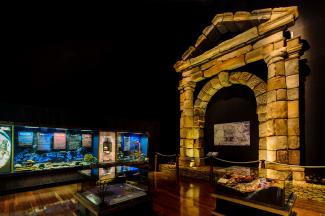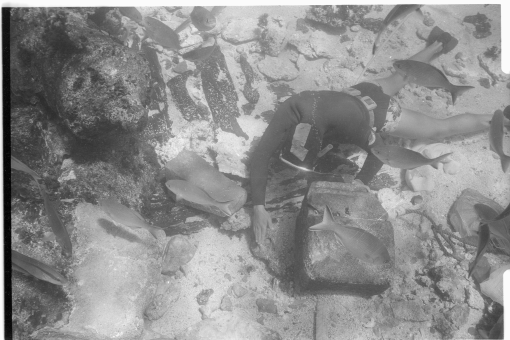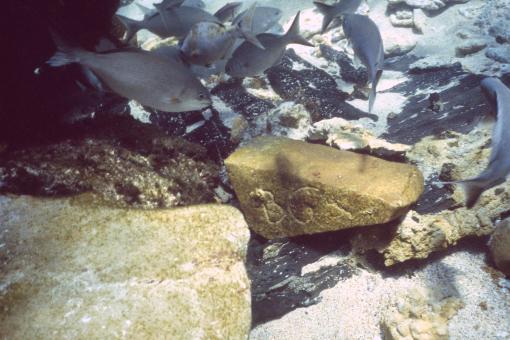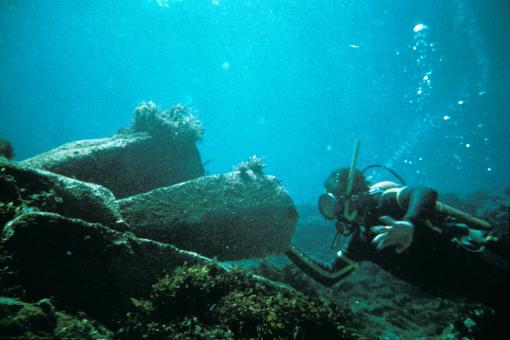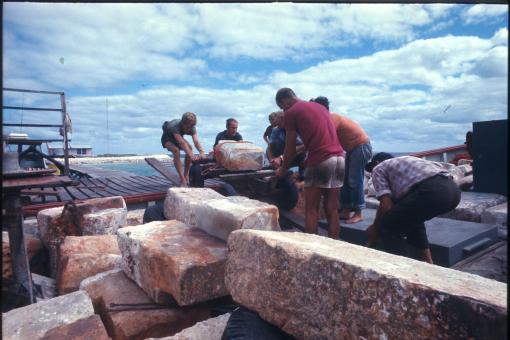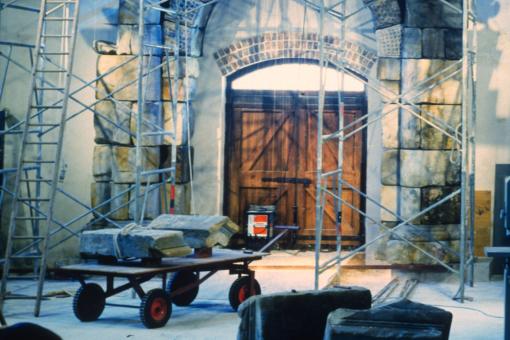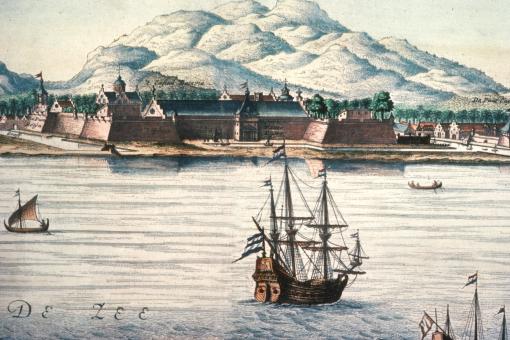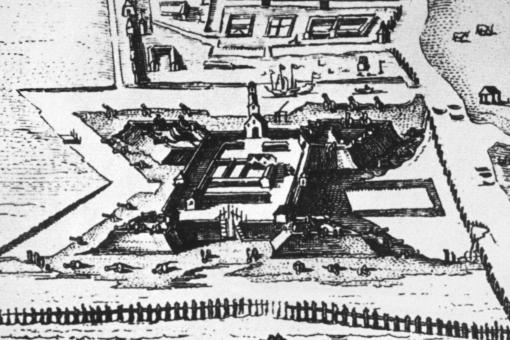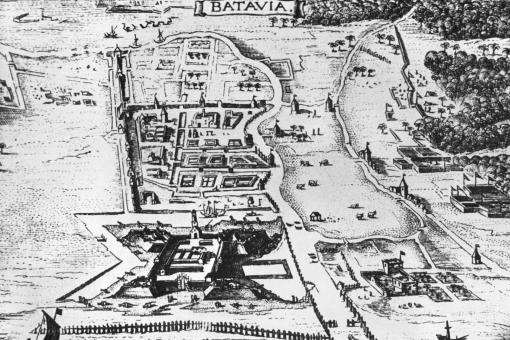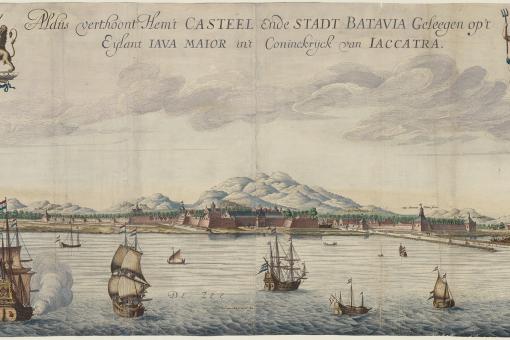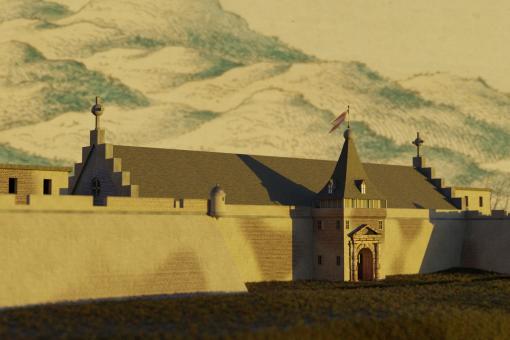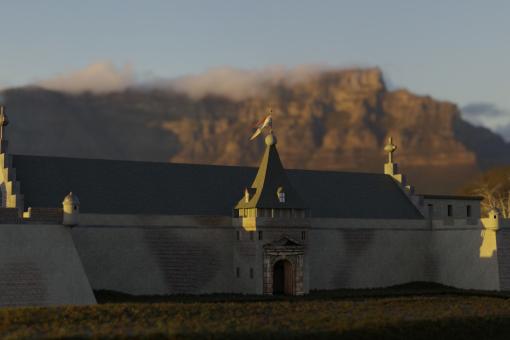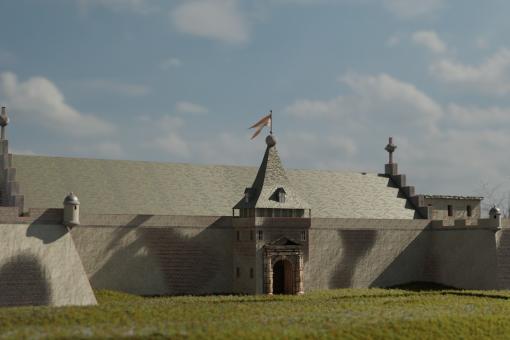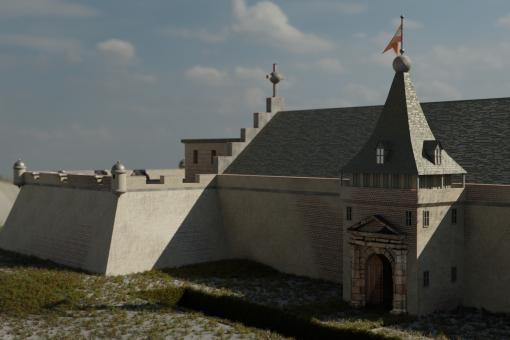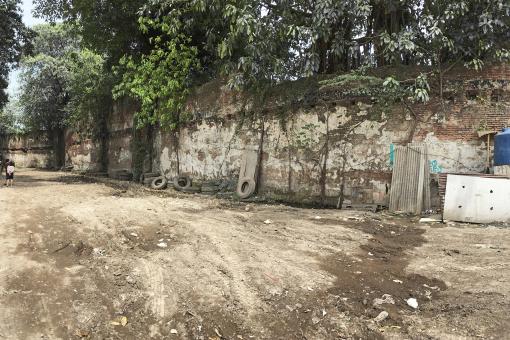This portico, once destined for the gates of a Dutch port city in Indonesia, was recreated from 137 sandstone blocks recovered from the wreck of Batavia (1629) by maritime archaeologists with the Western Australian Museum. On display in Geraldton, the closest point on the mainland to the shipwreck, it is extant physical evidence of the design of Kasteel Batavia.
Weighing 37 tonnes, the blocks were used to ballast the outward-bound Verenigde Oostindische Compagnie (VOC) or Dutch East India Company ship, and were destined for VOC buildings being constructed in Batavia. Mason’s marks inscribed on the surface provided instructions on how to assemble the stones into an enormous portico.
Rebuilding the portico
Before constructing the portico, the WA Museum archaeologists made a 1:10 model. Following the order of the mason’s marks, the column stones were stacked in alternating layers. The pediment, the top of the arch, was unmarked and was constructed through trial and error. Six bronze pintles, found at the wreck, would have been hinges for massive wooden doors.
German stones
The stones originate from Blentheim in Northwest Germany and have been cut in a Renaissance style typical of the Weser River region in Central Germany between 1530-1630. Given Blentheim’s proximity to the Netherlands, the sandstone was a popular building material used in Dutch official secular buildings including town halls and castles.
Dutch drawings and journal entries from the mid 17th century show that the portico was intended for the gates of the castle in the city of Batavia.
VOC architecture in Indonesia today
Kasteel Batavia was destroyed in 1809, along with other buildings in Oud Batavia (Old Town), by the Governor General of the Dutch East Indies, Herman Willem Daendels after several outbreaks of disease. Today the street Jalan Tongkol, Pademangan, North Jakarta passes through the centre of the area where Batavia Castle used to stand. The site is part of the Jakarta Old Town historic area and was recently excavated in 2021 by archaeologists from the University of Indonesia. Several walls were revealed with a small amount of bricks and ceramic fragments recovered.
